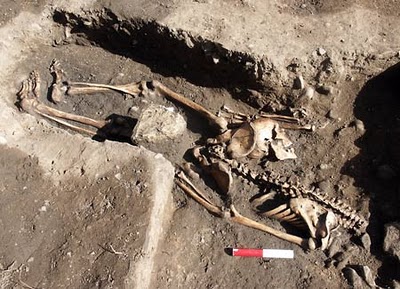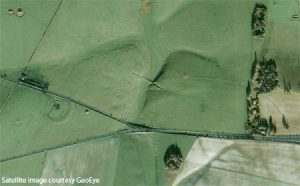 The Wiltshire police has announced there will be a large police presence at Stonehenge for this year’s Summer Solstice. Because the celebrations fall over the weekend and fine weather is predicted, bigger crowds than usual are expected and Wiltshire police have said they will clamp down heavily on antisocial behaviour. The police operation will involve an unmanned drone and horses. Also drugs sniffer dogs will be launched at Stonehenge tomorrow as huge crowds descend on the ancient site for the summer solstice.
The Wiltshire police has announced there will be a large police presence at Stonehenge for this year’s Summer Solstice. Because the celebrations fall over the weekend and fine weather is predicted, bigger crowds than usual are expected and Wiltshire police have said they will clamp down heavily on antisocial behaviour. The police operation will involve an unmanned drone and horses. Also drugs sniffer dogs will be launched at Stonehenge tomorrow as huge crowds descend on the ancient site for the summer solstice.
The Guardian reported on visitors of the Stonehenge fearing a repeat of the escalations at the recent G20 protests, but police say they are not looking for confrontation: ‘The drone would be used to help make sure the 30,000 people who were expected to attend the celebrations were safe; and there would be only three police horses, also there for “public safety” reasons rather than any crowd control.‘ Personally, I think the police should try Druid Arthur Pendragon’s good advice – You are not policing Salisbury, you are policing Stonehenge for the summer solstice – and remember that the majority of the summer solstice visitors are there for celebration, rather than protest.
The police warned people not to set up spontaneous raves or free festivals before or after the solstice. Another preventive safety measure is that – as mentioned in our practical guideline to the Summer Solstice – you can only take a limited amount of alcohol with you. Stonehenge is not located in Amsterdam, so any substance that is illegal in the United Kingdom will be considered to be illegal at Stonehenge too. Luckily, chances that this will turn out to be a second ‘Operation Solstice’ are small! 😉
Stonehenge History Lesson: Battle of the Beanfield (Operation Solstice)
The Battle of the Beanfield took place over several hours on the afternoon of Saturday June 1, 1985 when Wiltshire Police prevented a vehicle convoy of several hundred new age travellers, known as the Peace Convoy, from setting up the fourteenth Stonehenge free festival at Stonehenge in Wiltshire, England after English Heritage, the custodians of the site, persuaded a High Court Judge to grant an exclusion zone of some four miles around the Stones. The incident became notorious for accusations of a police riot that were reported to have taken place.
Those in the Convoy insist that, after a stand-off of several hours, police attacked their procession of vehicles by entering the field where they were being contained, methodically smashing windows, beating people on the head with truncheons, and using sledgehammers to damage the interiors of their coaches, an account supported by all the independent witnesses and upheld by the subsequent court verdicts. The Beanfield was the next field down from where the vehicles were; and when a large number of police entered the first field, many of the Convoy vehicles tried to escape by going through the Beanfield, where they were pursued and arrested by police.
At the time, the police alleged that they responded after they had earlier come under attack, being pelted with lumps of wood, stones and even petrol bombs, though they did not repeat these allegations in any of the subsequent court cases and no proof for any of them has ever come to light. Whilst the full account of events remains in dispute, a court judgement six years later found the police guilty of wrongful arrest, assault and criminal damage.



